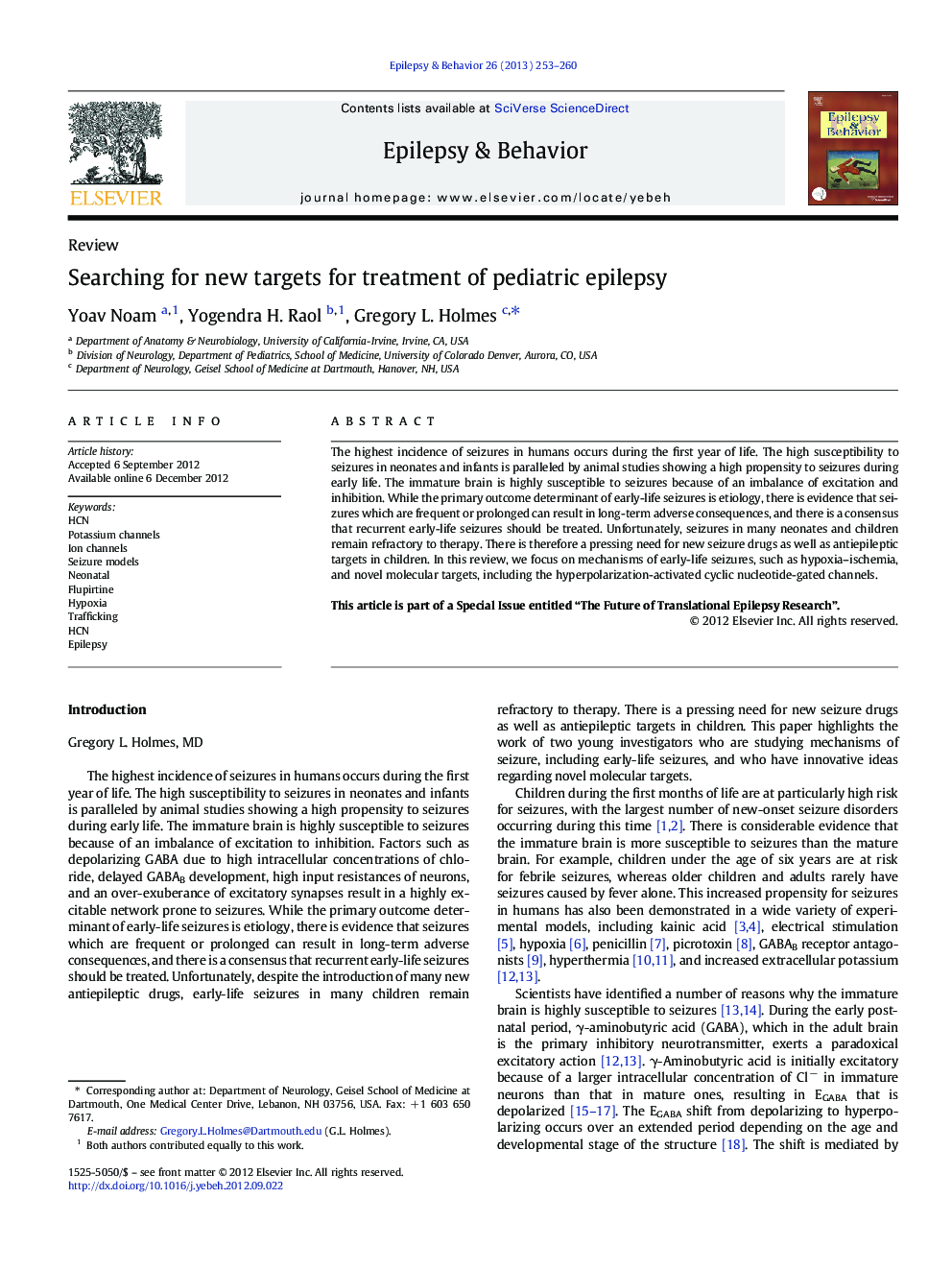| Article ID | Journal | Published Year | Pages | File Type |
|---|---|---|---|---|
| 6013372 | Epilepsy & Behavior | 2013 | 8 Pages |
The highest incidence of seizures in humans occurs during the first year of life. The high susceptibility to seizures in neonates and infants is paralleled by animal studies showing a high propensity to seizures during early life. The immature brain is highly susceptible to seizures because of an imbalance of excitation and inhibition. While the primary outcome determinant of early-life seizures is etiology, there is evidence that seizures which are frequent or prolonged can result in long-term adverse consequences, and there is a consensus that recurrent early-life seizures should be treated. Unfortunately, seizures in many neonates and children remain refractory to therapy. There is therefore a pressing need for new seizure drugs as well as antiepileptic targets in children. In this review, we focus on mechanisms of early-life seizures, such as hypoxia-ischemia, and novel molecular targets, including the hyperpolarization-activated cyclic nucleotide-gated channels. This article is part of a Special Issue entitled “The Future of Translational Epilepsy Research”.
⺠Current antiepileptic therapy for neonates is suboptimal. ⺠Flupirtine is a promising drug for neonatal seizures. ⺠Targeting HCN channels may provide novel therapeutics.
